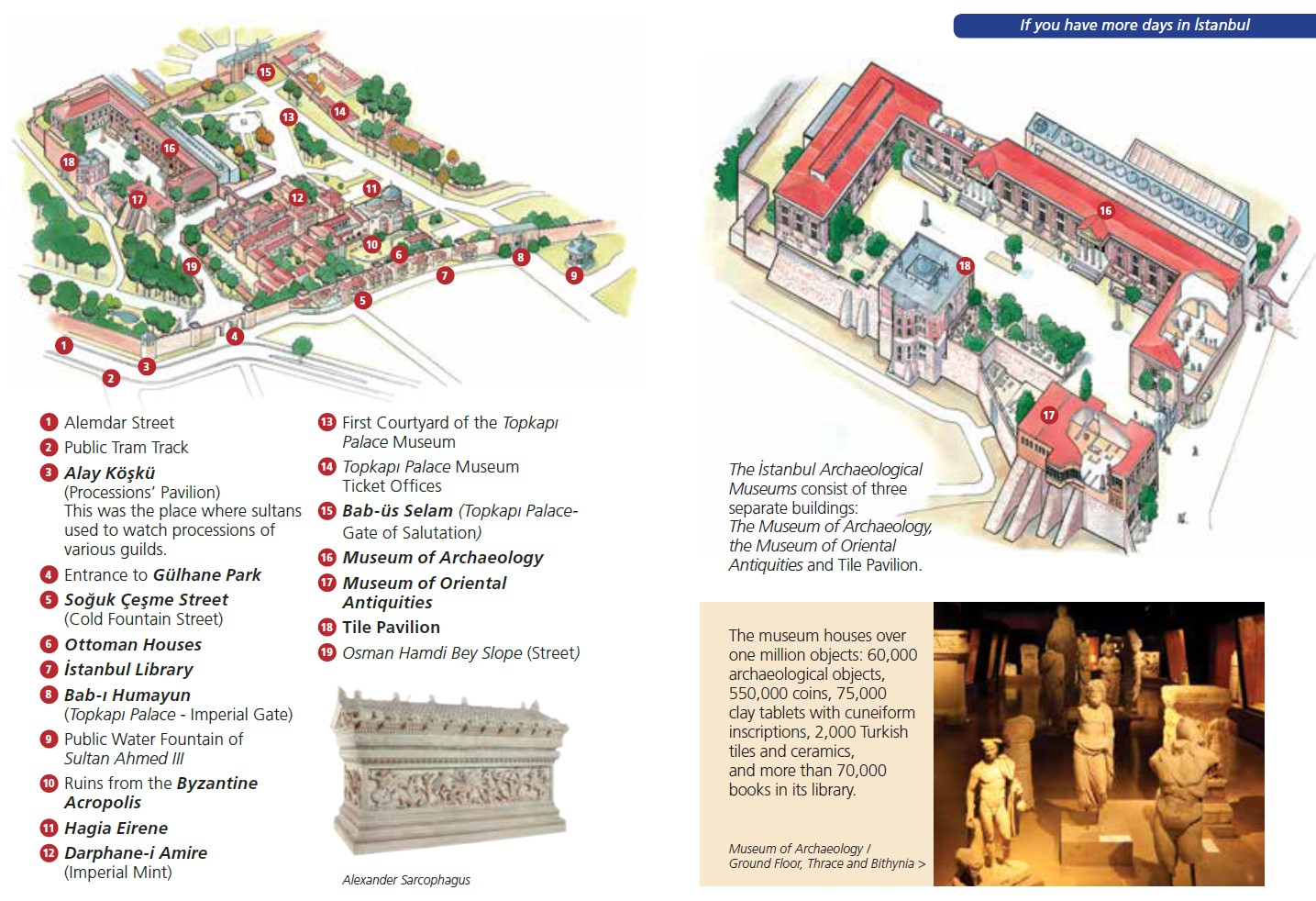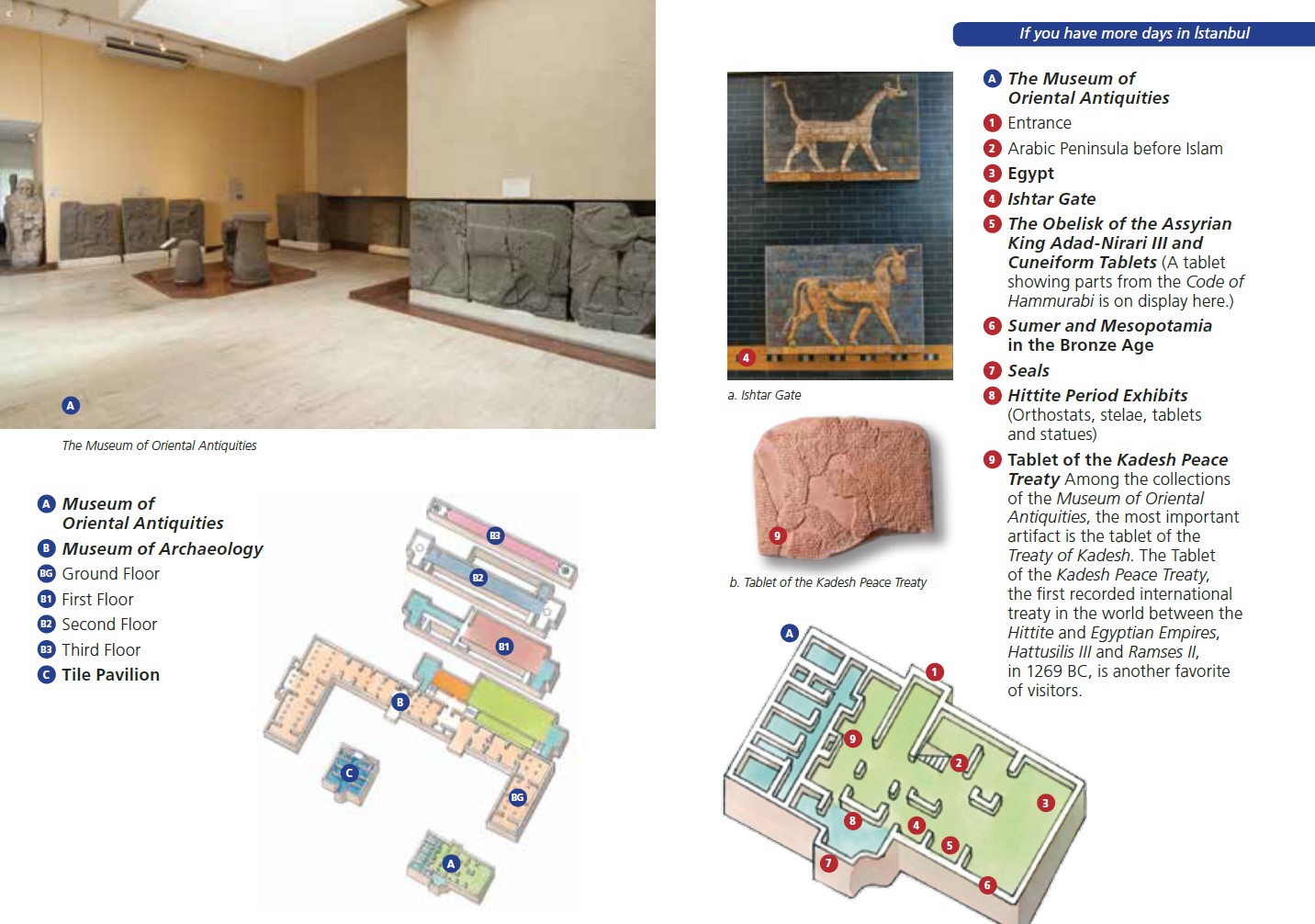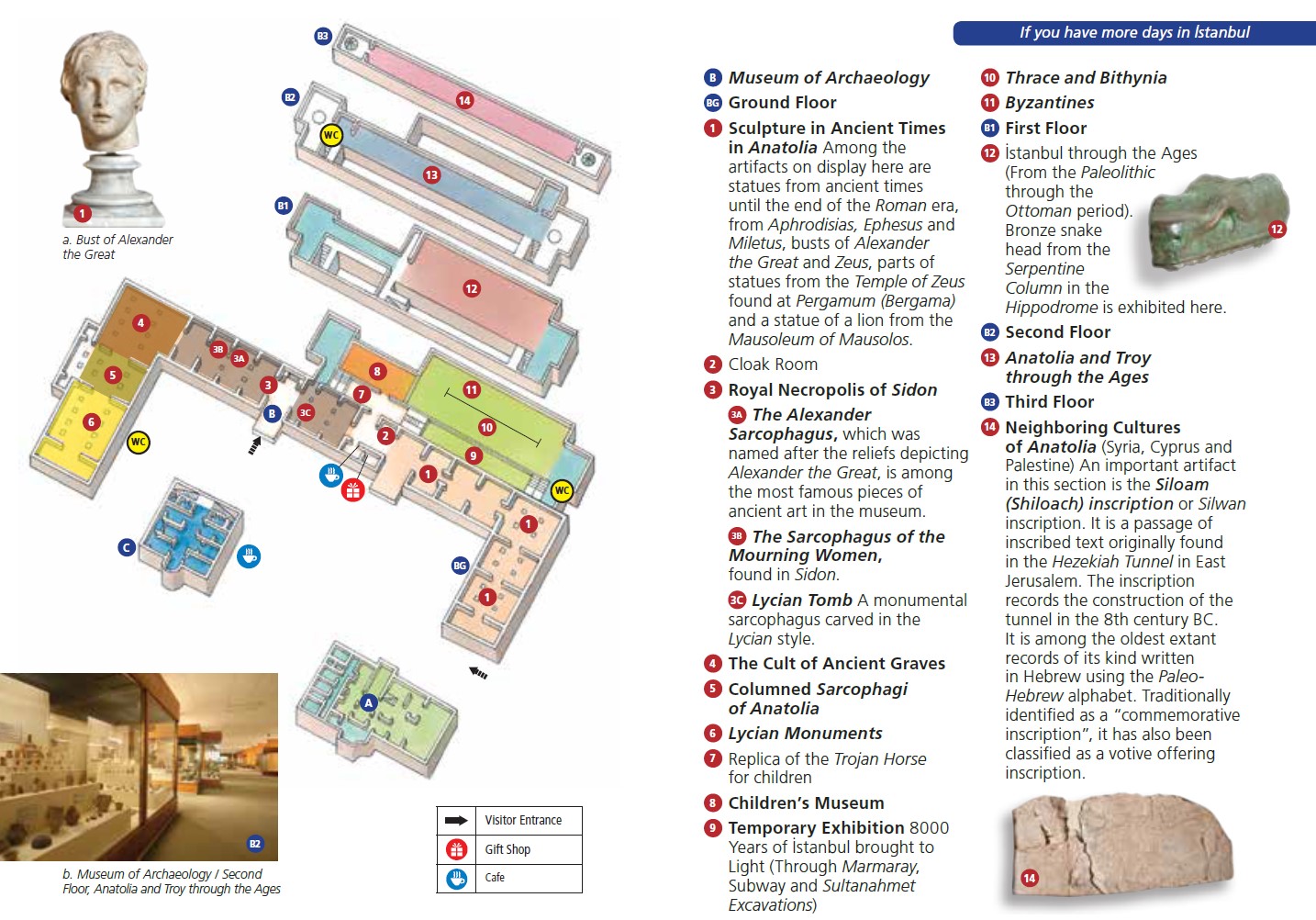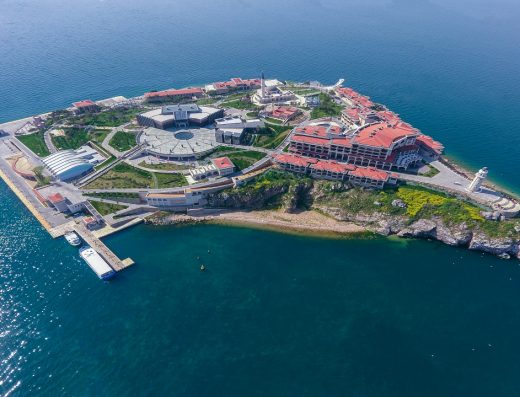The museum was among the 10 most important buildings in the world by the late 19th century. Osman Hamdi Bey, founder and director, was also its first curator. When the museum officially opened in 1891 under his directorship, it was the first museum to feature Anatolian, Ottoman and Turkish Art. The Museum received the European Council Museum Award in 1993. The exhibits were brought from many other countries where Ottoman Empire once controlled.
Closed on Mondays

Osman Hamdi Bey began construction of the Main Building in 1881 and by 1908 the building was as it is today. The architect was Alexander Vallaury. The Sarcophagi of Alexander the Great and The Mourning Women, both of which are housed inside the Museum, were the inspiration for the facade. This building is one of the prominent structures built in the neoclassical style in Istanbul.


Osman Hamdi Bey commissioned the building which is today the Museum of Oriental Antiquities as a Fine Arts School in 1883. Then it was re-organized as a museum and opened in 1935.
The Tile Pavilion was commissioned by Mehmed II in 1472. It is one of the oldest structures in Istanbul, featuring Ottoman civil architecture. It was opened to the public in 1953 as the Museum of Turkish and Islamic Art, and was later incorporated into the Istanbul Archaeological Museums.


